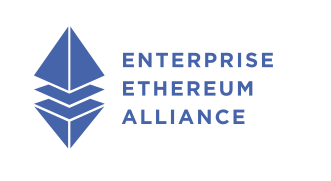September 19, 2024
The EEA today published version 1 of its new DLT interoperability specification.
About the specifications
This specification provides a standard framework to enable interactions between different blockchains and distributed ledgers. Using this standard reduces development time and the risk of errors by providing development teams with a set of well-known interfaces, rather than having to create a custom solution for each pair of networks a developer wants to connect.
The specification was developed by the EEA’s Cross-Chain Interoperability Working Group. This working group grew out of earlier work on interoperability, when EEA members recognized in 2019 that the future required general solutions. The group has already published important guidance for cross-chain interoperability, covering key areas such as decentralization and security, as well as crucial technical specifications for identifying blockchains and associated distributed ledgers. The group is also working with other groups in other organizations, which are developing software or standards in this important area.
Weijia Zhang, co-chair of Wanchain working group, said:
“The future of Web3 will consist of hundreds, if not thousands, of separate blockchain networks, making interoperability standards and specifications crucial to building a unified decentralized network of blockchains. The release of version 1 of the EEA DLT Interoperability Specification is a major milestone, providing guidance and reference implementations for cross-chain messages, data, and functions. We look forward to continuing to collaborate with our colleagues, partners, and other blockchain standards organizations.”
The current specification provides the tools needed to enable full-stack interoperability, from ensuring that messages transmitted between two networks are reliable, to building cross-chain applications that compose smart contracts across different platforms to create the next generation of powerful, scalable solutions for the enterprise.
Implementation experience
The EEA recently published a case study of an implementation of this specification, for a cash-on-delivery settlement system running on multiple blockchains. The group is also in contact with several other developers who have implemented, or are implementing, the specification for production deployment, and will continue to publish case studies, while taking into account feedback that suggests a revision might be necessary or useful.
Anaïs Ofranc, co-chair of the Qualitax working group, says:
“With the release of Version 1 of the DLT Interoperability Specification, we are proud to introduce an open standard that embodies our commitment to a collaborative, vendor-neutral interoperability ecosystem. This specification represents a critical step toward seamless interoperability across diverse distributed ledger technologies, ensuring that innovations can thrive regardless of the underlying platforms.”
About the EEA:
The EEA is a global community of blockchain leaders, adopters, innovators, developers, and companies. We accelerate Ethereum business through professional and business support, advocacy and research, standards development, and ecosystem trust services.
For more information on the EEA DLT Interoperability Specifications, or how to contribute to its working groups, please contact EEA Technical Program Director Chaals Nevile: chaals@entethalliance.org.
For EEA membership inquiries, please contact membership@entethalliance.org or visit
The article EEA releases DLT interoperability specification appeared first on Enterprise Ethereum Alliance.




